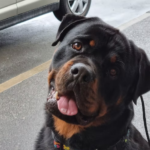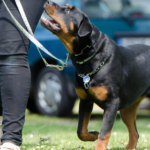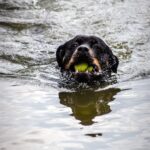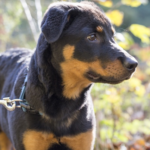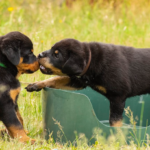Like all breeds, Rottweilers require proper training and socialization to become well-behaved and obedient members of the household. As a new Rottweiler owner, you may be wondering where to start with training your 8 week old puppy. This guide will cover the basics of Rottweiler training, including subtopics on potty training, obedience training, and socialization.
By starting the training process early and using positive reinforcement methods, you can set your Rottweiler up for success. Remember to be consistent and patient, and to always supervise your puppy to prevent accidents. With the right training, your Rottweiler will be a loving and loyal companion for years to come.
Obedience Training
Obedience training is another crucial aspect of Rottweiler training. Teaching your puppy basic commands such as “sit,” “stay,” and “come” will help establish you as the leader and make it easier for you to control your dog in different situations. Keep training sessions short and positive, using treats and praise as rewards. It’s also important to be consistent with your commands and to only use positive reinforcement methods.
Basic Commands
Teaching your Rottweiler basic commands such as “sit,” “stay,” and “come” is an important step in obedience training. Start by teaching your puppy one command at a time and using a consistent command word or phrase. Use positive reinforcement techniques such as treats or praise to reward your puppy when they follow the command correctly. As your puppy becomes more comfortable with the basic commands, you can begin to add in more advanced commands such as “heel” and “off.”
Leash Training
Leash training is an important aspect of Rottweiler training, especially if you plan on taking your dog on walks or hikes. Start by getting your puppy comfortable with wearing a collar and leash, and then progress to walking with them on a leash. Use positive reinforcement techniques and a consistent walking pace to ensure your puppy is comfortable and not pulling on the leash. As your puppy becomes more comfortable with leash walking, you can begin to work on more advanced leash training techniques such as walking in busy areas or training for a heel command.
Crate Training
Crate training is an effective way to help your Rottweiler feel safe and secure. Start by introducing your puppy to the crate and making it a positive experience by placing treats and toys inside. Once your puppy is comfortable with the crate, begin to gradually increase the amount of time they spend inside. Be sure to supervise your puppy at all times to prevent accidents, and never use the crate as punishment. With consistent and positive crate training, your Rottweiler will come to see the crate as their own personal space.
Bite inhibition
Bite inhibition is the process of teaching your Rottweiler when and how hard to bite. Start by teaching your puppy to be gentle with their mouth when playing or interacting with people or other animals. Use positive reinforcement techniques to reward your puppy when they use a gentle bite and redirect them when they use a hard bite. As your puppy becomes more comfortable with bite inhibition, you can begin to work on more advanced bite training techniques such as training for a “drop it” command.
Basic Agility Training
Basic agility training is a fun way to keep your Rottweiler active and mentally stimulated. Start by introducing your puppy to basic agility equipment such as tunnels and jumps. Use positive reinforcement techniques and gradually increase the difficulty of the obstacles. As your puppy becomes more comfortable with basic agility training, you can begin to work on more advanced agility training techniques such as training for specific agility courses or competitions.
Basic Guard Training
Basic guard training is important if you want your Rottweiler to protect your family and property. Start by teaching your puppy basic commands such as “stay” and “watch me.” Use positive reinforcement techniques and gradually increase the difficulty of the training. As your puppy becomes more comfortable with basic guard training, you can begin to work on more advanced guard training techniques such as training for specific protection scenarios or competitions.
Final Thoughts
By starting the training process at 8 weeks old and using positive reinforcement methods, you can set your Rottweiler up for success. Remember to be consistent, patient, and to supervise your puppy at all times to prevent accidents. Training your Rottweiler in various subtopics like potty training, obedience training, socialization, basic commands, leash training, crate training, bite inhibition, basic agility training, and basic guard training can help to make your Rottweiler a well-rounded and well-behaved companion. With the right training and socialization, your Rottweiler will be a loving and loyal companion for years to come.


